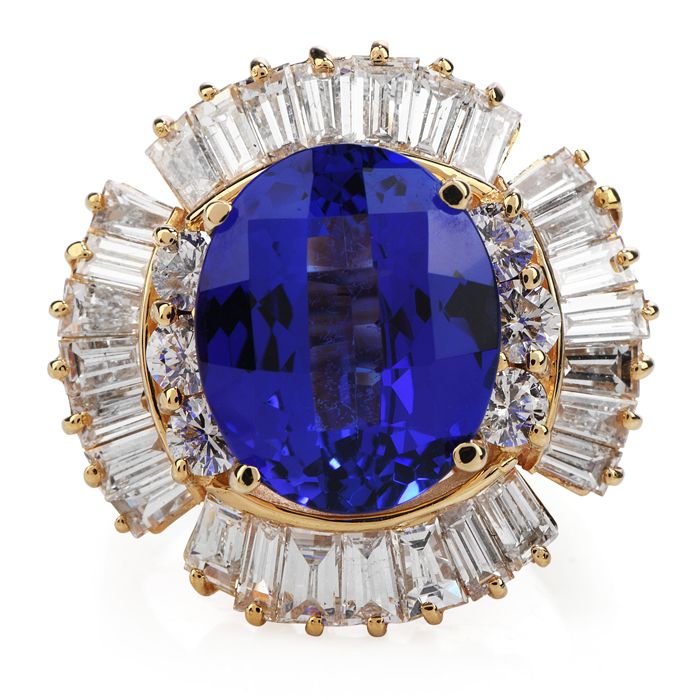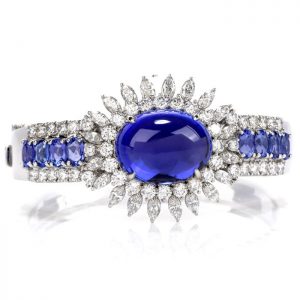
Tanzanite 1,000 times Rarer Than Diamond, Diminishing World Supplies
What you need to know about Tanzanite
Color
Tanzanite comes in many colors, but blue tanzanite is the rarest and the most expensive. Deep blue is the most desired color in tanzanite, although it also comes in light blue.
Tanzanite is named after the country it was found in – Tanzania, in Africa. Blue tanzanite coloring can be extremely vivid, so you may be mistaken and think you are looking at a sapphire. Tanzanite is often seen in a striking blend of purples, violets together with depths of different shades of blue. It can also show a change in color from blue, when viewed in daylight, to violet when looked at in incandescent lighting.
Natural, untreated Tanzanite is known for its trichroism. This means it is able to display three different colors at once when viewed from different angles. When it has been heat-treated it becomes dichroic – which means it shows two colors – blue and violet.
 You should expect your tanzanite to have been heat-treated to bring out its spectacular blue color. Heat treatment is done to about 98% of all tanzanite on the market and should be accepted as the norm for this extraordinary gemstone.
You should expect your tanzanite to have been heat-treated to bring out its spectacular blue color. Heat treatment is done to about 98% of all tanzanite on the market and should be accepted as the norm for this extraordinary gemstone.
Clarity
The average tanzanite has a much better clarity grading than most other colored gemstones, including emerald, sapphire, ruby, peridot, amethyst, and citrine among others.
Rarity
Tanzanite was first discovered in 1967 and is only found in a small area near the Mererani Hills around the foothills of Mount Kilimanjaro. According to geologists, the conditions in which tanzanite was formed under the earth some 585 million years ago were so extraordinary, that the likelihood of finding it somewhere else in the world are one in a million. Supplies are slowly being depleted, so it is likely there will eventually be none left in 15-20 years – hence its extreme value.
Tanzanite is 1,000 times rarer than diamond – a fact that may astonish you. Having said that, tanzanite is not as popular as sapphire or diamond, so prices tend to be reasonable right now. It is an underrated gemstone, in terms of boast appeal, given its beauty and scarcity.
Investment Value
As supplies of tanzanite are diminishing, it is important to stress that they will become even more scarce. Tanzanite One, the largest producer of cut tanzanite, has signed with the Chinese to supply them with cut-to-order stones, inevitably leading to plummeting supplies and soaring prices. Tanzanite jewelry will keep its investment value.
Tanzanite Durability
Perhaps one of the reasons tanzanite is not as popular as sapphire or diamond is the fact that it is slightly less durable and should not be worn every day. Diamond rates a 10 on the Mohs Hardness Scale; sapphire rates a 9; tanzanite is 6.5-7. However, because of its extraordinary beauty, tanzanite is perfect to wear on formal or special occasions.
How to Style?
Let us show you our special occasion or cocktail pieces.
- Here is an estate oval halo diamond and tanzanite ring.
- Another cocktail ring we particularly like in our collection is this diamond platinum cluster ring featuring a prong set, square cut 18.01 GIA certified Tanzanite.
- These are eye-catching emerald, diamond and pear-shaped tanzanite drop earrings, the perfect complement to a simple cocktail dress or an elaborate ballgown.
Looks, rarity, dwindling supplies, investment value, elegance, style, affordability. Tanzanite gives you it all.
Dover Jewelry & Diamonds is here to help you invest in what will soon be the last of a very special gemstone.


